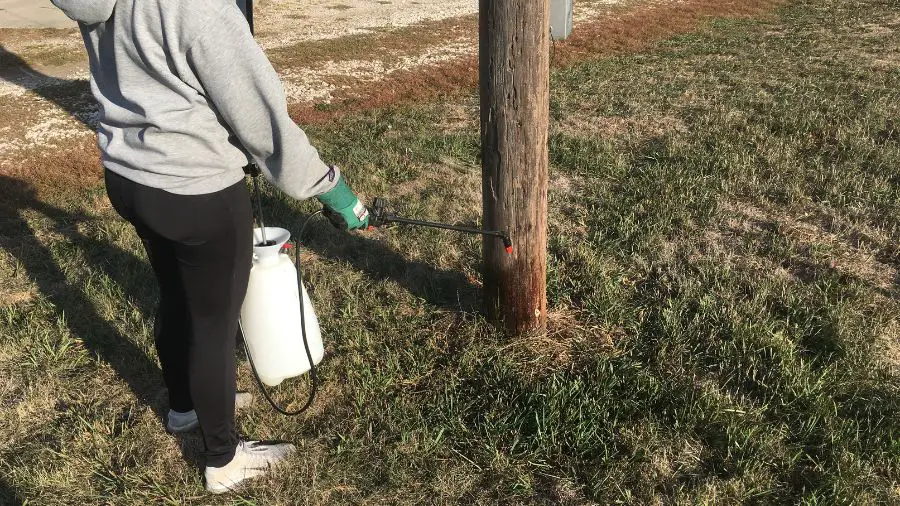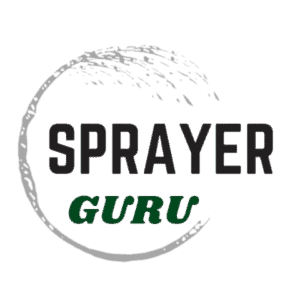If you’re new to weed control, you may have heard the terms “broadcast spraying” and “spot spraying” but may not be sure what they mean. Simply put, these are two different ways to apply weed-killing chemicals to your garden, lawn, or field. The main difference between these two methods is the coverage area.
Spot spraying involves targeting specific locations where weeds or pests are present and applying herbicide or pesticide directly to those areas only. This method is typically used for selective weed control, where only specific plants need to be targeted without harming surrounding vegetation. Sometimes this might mean targeting even one plant or weed. Spot spraying is typically done by hand. There is a family of sprayers known as “spot sprayers” that are designed for spot spraying. They usually consist of a tank, electric pump, and spray wand. Hand sprayers and backpack sprayers are also commonly used for spot spray applications. When spot spraying, the amount of overall chemical used is less, but it is not metered as precisely as with broadcast spraying.

Broadcast spraying involves applying herbicides or pesticides across a larger area, such as a whole field, garden, or orchard. Broadcast spraying is used for non-selective weed or pest control and is used when the entire area needs to be treated. This is typically achieved by using a sprayer with a boom. There are many sprayer boom variations but in general, they consist of a solid pipe or bar with a series of evenly spaced nozzles that all produce the same flow rate and spray pattern. This ensures that when a constant speed is maintained, the boom will be evenly applying the chemical mixture over the entire field.

Spray Mixtures for Broadcast Spraying & Spot Spraying
The mixture rate for spot spraying and broadcast spraying can vary depending on the herbicide or pesticide being used, the specific application, and the target weed or pest.
When you are broadcast spraying, you have a target rate. This is the amount of your spray mixture that will be applied over a given area. This is typically measured in gallons per acre or thousand square feet. When spot spraying you do not have a specific target rate for an area, instead you would have a ratio of chemical to water that you will mix. The ratio of the active ingredient herbicide to water will vary depending on the type of weed or past you’re trying to kill. For example, larger weeds might require a stronger mixture than small weeds.
For specifics on mixing ratios you should always refer to the product label for guideance. You should also ensure you calibrate your sprayer. This is important to ensure you are applying the proper amounts. For information, you can refer to this article on ATV sprayer calibration and this one about backpack sprayers.
You can use a spot sprayer, backpack sprayer, or hand pump sprayer as a broadcast sprayer. For instance, a backpack sprayer can be used to treat an entire lawn like you would with a boom sprayer. However, there are some disadvantages to doing this.
First, the speed will vary as you walk around your lawn. A boom sprayer towed by a lawn mower or other piece of equipment can most likely travel at a steadier rate than you. Second, your nozzle will not always maintain the same distance from the ground as a boom would. Finally, if you are using a manual sprayer like a hand pump sprayer, the pressure will not be constant.
Why Does this matter? The goal of Broadcast spraying is to apply your chemical evenly across the given area. For example, you may want to spray 5 gallons of your spray solution for every acre. To evenly apply the same rate these three things must be constant: Speed, nozzle size, pressure, and nozzle spacing. If one of these things is not constant then your application rate will not be constant. Granted, the difference between using a manual hand pump or backpack sprayer versus a small boom sprayer may not be that big and you can still effectively kill weeds or pests with them. This may not be a big deal if you’re spraying a small yard but if you are spring commercially or in large-scale agriculture this variation adds up.
Which Application Method is Better?
When it comes to compairing spot spraying vs. broadcast spraying, one of these methods is not necessarily better than the other. However, one may be better suited for an application than the other. There are several factors to consider such as the type of weeds you’re dealing with, the size of the area, and the results you desire.
Generally speaking, broadcast spraying is better suited for larger areas where weeds are widespread and uniform. It provides a more efficient application of herbicides over a large area. However, it does also result in the application of chemicals in areas where weeds are not present. This is useful for preventing weeds or pests in those areas.
On the other hand, spot spraying is better suited for smaller areas where there are only a few weeds to control. This method is more targeted and can help to reduce the amount of chemical applied, which can save money. However, it requires more time and effort to locate and spray each weed individually.
Ultimately, the decision on which method to use will depend on the specific circumstances of your weed control needs. Of course, It’s important to refer to the labels of the chemical products you are using for instructions on which methods may be best for that product as well as how to mix them for different application methods.
What Type of Sprayer Should I Use?
Spot spraying can be accomplished with any sprayer that has a handheld spray wand. This includes backpack sprayers, spot sprayers (obviously!), hand pump sprayers, and many others.
Broadcast spraying can be achieved with any type of boom or boomless sprayer. The label of the product that you want to apply can provide guidance to the specific droplet size and application rate that you need. This will direct you to the proper nozzle type and size for your boom. If you are new to sprayer nozzles you can find out helpful basics in this article I wrote that covers nozzle size, droplet size, etc.
You can see a list of different sprayers that can be used for both spot spray and broadcast spraying in this guide to choosing the right sprayer.
Final Thoughts
In order to make sure that your hard work is not in vain, you want to use the appropriate application method. It is important to know the basics things that can affect your sprayer output. Just rolling out the sprayer without a general understanding can do more harm than good.

